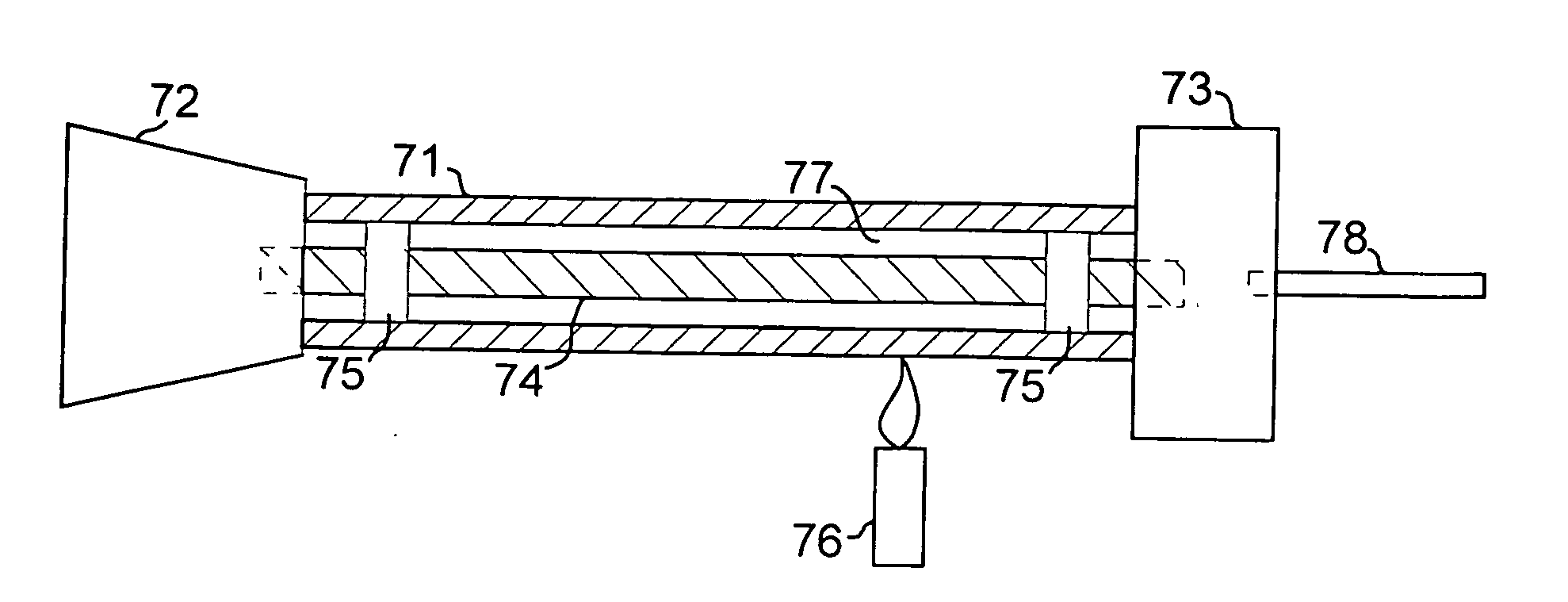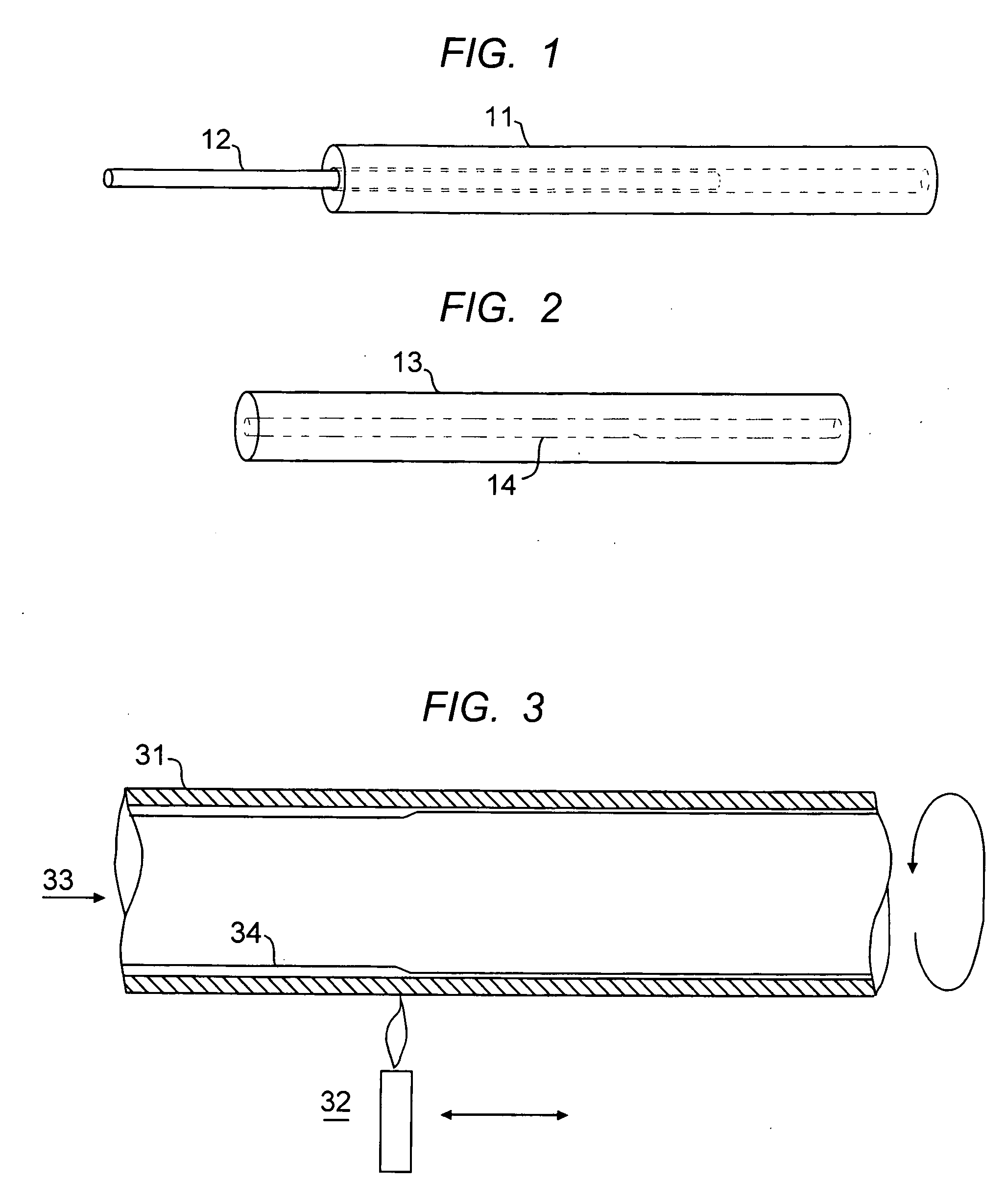Optical fiber manufacture
- Summary
- Abstract
- Description
- Claims
- Application Information
AI Technical Summary
Benefits of technology
Problems solved by technology
Method used
Image
Examples
Embodiment Construction
[0021] Typical rod-in-tube methods are described in conjunction with FIGS. 1 and 2. It should be understood that the figures referred to are not necessarily drawn to scale. A cladding tube representative of dimensions actually used commercially has a typical length to diameter ratio of 10-15. The core rod 12 is shown being inserted into the cladding tube 11. There exist several common options for the composition of the core rod, It may be pure silica, adapted to be inserted into a down-doped cladding tube. It may have a pure silica center region with a down-doped inner cladding region. It may have an up-doped, e.g. germania doped, core region surrounded by a pure silica cladding region. It may have an up-doped center core region surrounded by a down-doped inner cladding region. All of these options, and many variations and elaborations, are well known in the art and require no further exposition here. However, the preferred embodiment of the invention is aimed at the case where the ...
PUM
| Property | Measurement | Unit |
|---|---|---|
| Diameter | aaaaa | aaaaa |
| Size | aaaaa | aaaaa |
| Content | aaaaa | aaaaa |
Abstract
Description
Claims
Application Information
 Login to View More
Login to View More - R&D Engineer
- R&D Manager
- IP Professional
- Industry Leading Data Capabilities
- Powerful AI technology
- Patent DNA Extraction
Browse by: Latest US Patents, China's latest patents, Technical Efficacy Thesaurus, Application Domain, Technology Topic, Popular Technical Reports.
© 2024 PatSnap. All rights reserved.Legal|Privacy policy|Modern Slavery Act Transparency Statement|Sitemap|About US| Contact US: help@patsnap.com










